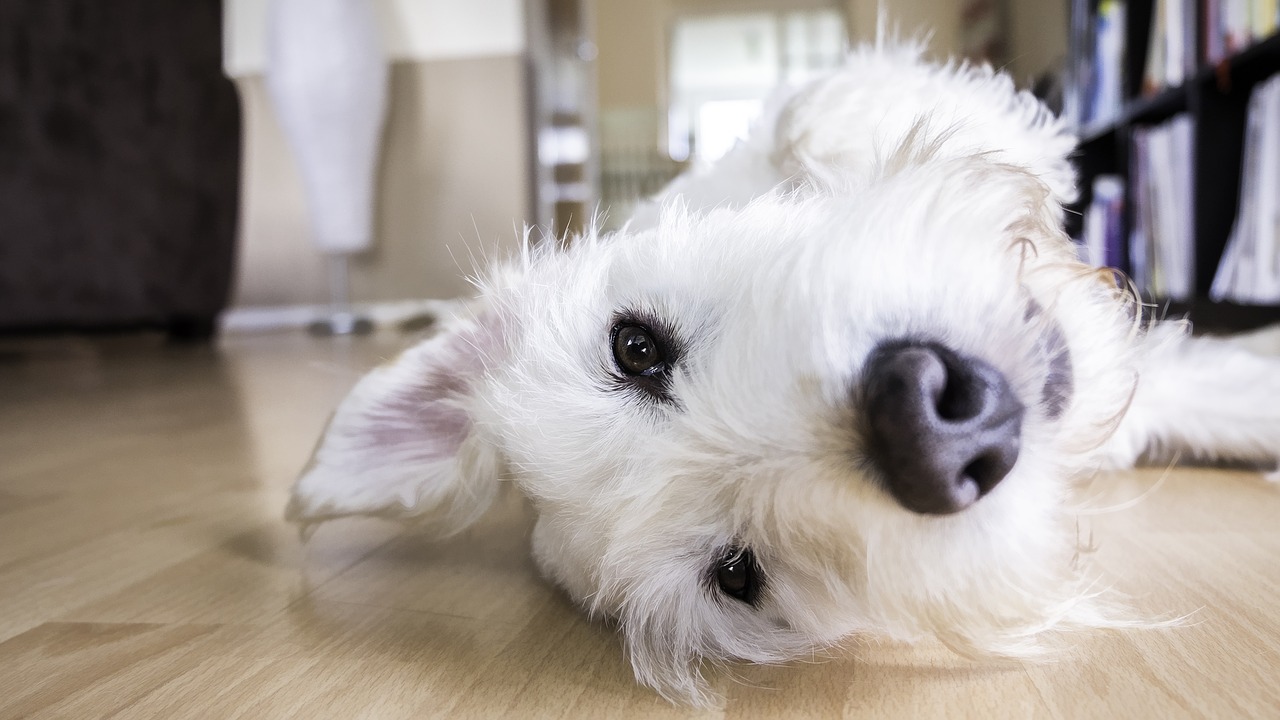Finding an apartment that accepts pets, particularly dogs, can be a real hassle for anyone moving to a new home.
Hi, my name is Jennifer and while I have 2 dogs, I also live in a house that accepts my pets without restriction. (I also have a cat.)
After I graduated from college in Boulder, Colorado, I moved back to my home state of New York with two dogs (a Weimaraner and a Yorkie), a cat AND a ferret.
Luckily, a family member let me rent their house and I was able to keep all of my pets. Millions of people around the world are not so lucky.
In fact, changes in living situations are the top reason why people surrender their dogs to shelters.
Some landlords allow dogs with a monthly pet fee included in the rent while others have strict pet restrictions.
Here are the various types of restrictions renters with pets can face when trying to find an apartment:
Types of Restrictions For Rental Property
Age
Landlords can refuse to rent to tenants who have or plan to have a dog under 2-years-old.
This is because puppy hood is typically a very destructive time as pups are taught how to behave.
Puppies also need to be housebroken and landlords might not want their apartments used as giant wee pads.
We have created an article that may help you here, how to potty train a puppy while you work
Size
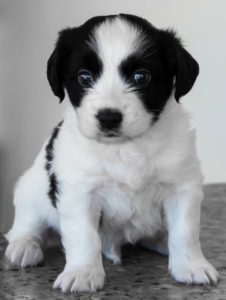 It is assumed that large breeds will cause more of a nuisance than smaller breeds, either in regard to barking or aggression. Kind of ironic considering how snippy small dogs can be.
It is assumed that large breeds will cause more of a nuisance than smaller breeds, either in regard to barking or aggression. Kind of ironic considering how snippy small dogs can be.
My Weimaraner is considered a large breed, so finding an apartment with him would be difficult.
Weims are also well-known for their separation anxiety and he has literally eaten a door while I was at work. (In his much younger years; he just turned 11 and sleeps a lot now.)
Weight
Some landlords choose to gauge their size restrictions by placing a limit on how much a prospective tenant’s dog can weight. 25-pounds is the common weight limit that landlords put on dogs.
While my Yorkie (Lola) is a bit chubby, she would fit under the weight limit easily. My Weim, not so much.
Number of Dogs
Not only do landlords place restrictions on the number of dogs allowed in an apartment (typically just two,) town municipals also often have limits.
Be sure to check both with the landlord AND the town before you sign any rental agreement.
The reasoning for limiting the number of dogs is the assumption that more dogs will cause more problems.
But some people have found that getting a second dog helps keep the other one occupied and overall less destructive.
(For example, many Weimaraner owners have found that getting a second dog helps ease the first dog’s separation anxiety.)
Breed
Most breed restrictions are based on the reputation of the breed as “aggressive.”
It’s a very controversial subject because you really can’t lump all dogs of a particular breed showing all the same traits and temperament.
Another common breed restriction is a generic ban on dogs deemed to be “too big” for rental apartments.
Can a Landlord Restrict a Service Dog Based on Breed?
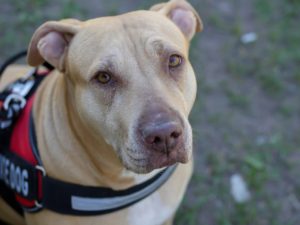
Many people are misinformed on how the ADA (Americans with Disabilities Act) works and what is covered under the law.
For example, airlines don’t follow the ADA; they follow the Air Carrier Access Act, which is how airlines are able to place restrictions on breeds of service dogs/emotional support animals allowed on flights.
Here is a surprise – landlords CAN refuse to accommodate a service animal based on breed if it would cause an undue burden. An example of “undue burden” might be if the landlord lost his home insurance if the allowed a restricted breed on the premises.
However, service dogs are exempt from the typical “pet fee” landlords require for pets. The “pet fees” are either a one-time fee or a monthly fee added on top of your rent.
Also, FYI – real service dogs don’t need to be registered, there is no certificate that “proves” the dog is a service dog. Also, ESAs (Emotional Support Animasl) are not protected by the ADA.
Of all the types of restrictions placed on whether pets are allowed in rentals or not, the breed itself is the most common.
Common Restricted Breeds
Pit bulls and similar looking breeds are THE most restricted breed when trying to find housing.
Aside from the Pit bull, here are some other breeds that constantly face restrictions:
Rottweilers
 Widely considered one of the oldest herding dog breeds, Rottweilers were used to herd cattle and pull heavy carts.
Widely considered one of the oldest herding dog breeds, Rottweilers were used to herd cattle and pull heavy carts.
In more recent times, Rottweilers have been used as police dogs, search-and-rescue dogs and guard dogs.
An extremely strong, muscular dogs, Rottweilers typically weigh between 80 and 140 pounds.
Many owners attest that Rotties are a gentle giant of a breed, but negative connotations still circulate about the breed because of their massive size.
Akitas
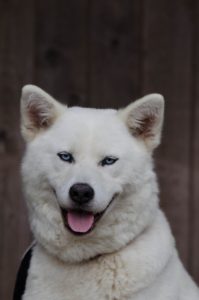 Akitas originated in the mountains of Japan and were used for hunting bear and wild boar.
Akitas originated in the mountains of Japan and were used for hunting bear and wild boar.
The first Akitas were brought to the US by Helen Keller after the Japanese government presented two Akitas to her in 1937.
The legendary dog Hachi, who famously waited at a train station for his owner for nine years, as an Akita and there is a monument of his likeness at a train station in Japan.
Akitas are terrific watch dogs because they can be fierce and intimidating around strangers.
They tend to be dominant with other dogs, which can lead to aggression between Akitas and other breeds.
We have a great comparison of Akita vs Husky if you’d like to check it out here!
Doberman Pinschers
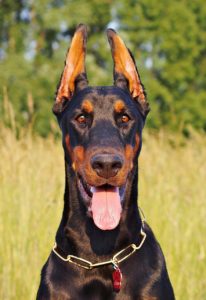 Doberman Pinchers were first bred by a tax collector in Germany in 1890.
Doberman Pinchers were first bred by a tax collector in Germany in 1890.
They have since been a popular choice for guard dogs because of their tenacity and strength. They are sometimes used as police dogs.
Like many other dog breeds on the banned list, Dobermans get a bad reputation as aggressive and violent dogs. With proper training, they can be just as loving and docile as a small dog.
Siberian Huskies
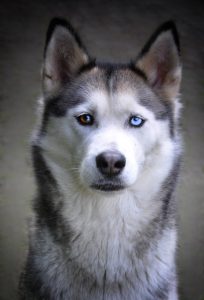 As their name suggest, Siberian Huskies originated in the Siberia area of Russia. However, they are more commonly thought of as sled dogs in Alaska.
As their name suggest, Siberian Huskies originated in the Siberia area of Russia. However, they are more commonly thought of as sled dogs in Alaska.
Their thick coat of fur allows Huskies to withstand – enjoy, even – cold, snowy weather more than other dog breeds.
Huskies aren’t known to be aggressive, but their high energy levels and habit of being a VERY vocal breed makes landlords wary of allowing them in their rental properties.
We have a great article on Huskies vs Labradors, if you’d like to check it out here!
German Shepherds
 Hailing from Germany, German Shepherds are extremely intelligent working dogs.
Hailing from Germany, German Shepherds are extremely intelligent working dogs.
A great majority of police dogs are German Shepherds, which is how they became notorious for being aggressive.
When you see a demonstration of a police dog taking down a suspect, it’s usually a German Shepherd hanging from the demonstrator’s arm.
German Shepherds are one of the restricted breeds simply because their reputation as aggressive precedes them and landlords are reluctant to take on the liability.
Great Danes
 Originally bred in Germany to hunt boar, Great Danes are now revered as the largest of dog breeds.
Originally bred in Germany to hunt boar, Great Danes are now revered as the largest of dog breeds.
While standing on their hind legs, Great Danes can reach a height of 7 feet or more!
Landlords are probably wary of letting a mini-horse into their rentals. Great Danes are also known to be loud barkers, which can be disruptive for adjoined apartments.
I believe size and weight is what lands the Great Dane on any restricted list because their personality is one of the goofiest of all dog breeds.
Dalmatians
 The Dalmatian breed can be traced back to Croatia in the late 1700s.
The Dalmatian breed can be traced back to Croatia in the late 1700s.
Dalmatians were originally tasked with guarding stables at night but now they are widely regarded as firehouse mascots and the spokesdog for the Anheuser-Busch brand of beer.
Dalmatians are hardly aggressive dogs. I suspect Cruella de Vil is responsible for Dalmatians being on the restricted dog list.
English Mastiffs
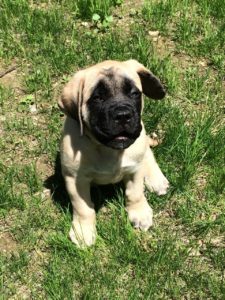 Mastiffs hail from Asia and may be descendants of the ancient dogs that found lions and bears in the Roman arenas.
Mastiffs hail from Asia and may be descendants of the ancient dogs that found lions and bears in the Roman arenas.
Now Mastiffs are used as guard dogs or companion dogs. Despite their size, they can be calm and loving.
Their immense size and weight might cause landlords to be wary to allowing them into rentals.
Bulldogs
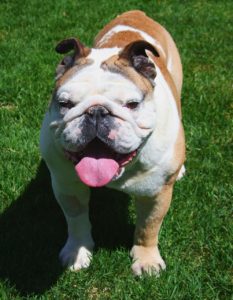
Bulldogs might seem harmless, but they were originally bred as bait dogs.
This unfortunate history can make them seem more aggressive than they are.
Wolf hybrids
 Yes, wolf hybrids are a thing now.
Yes, wolf hybrids are a thing now.
Many states have laws against even owning the hybrid dogs, so it’s not surprising that landlords also include them in their list of restricted breeds.
Final Thoughts…
 For a progressive-thinking society that insists that people should be judged based on their own actions instead of stereotypes, we sure like to stereotype and discriminate against so-called “aggressive” dog breeds.
For a progressive-thinking society that insists that people should be judged based on their own actions instead of stereotypes, we sure like to stereotype and discriminate against so-called “aggressive” dog breeds.
We seem to have an internal bias that if a dog is large and looks mean, it will turn on us like Cujo.
While aggression in dogs can be inherent, it is also learned through rough-housing, neglect or other means that has less to do with the dog’s personality and more to do with their environment. Nature vs. Nurture: The Dog Edition.
